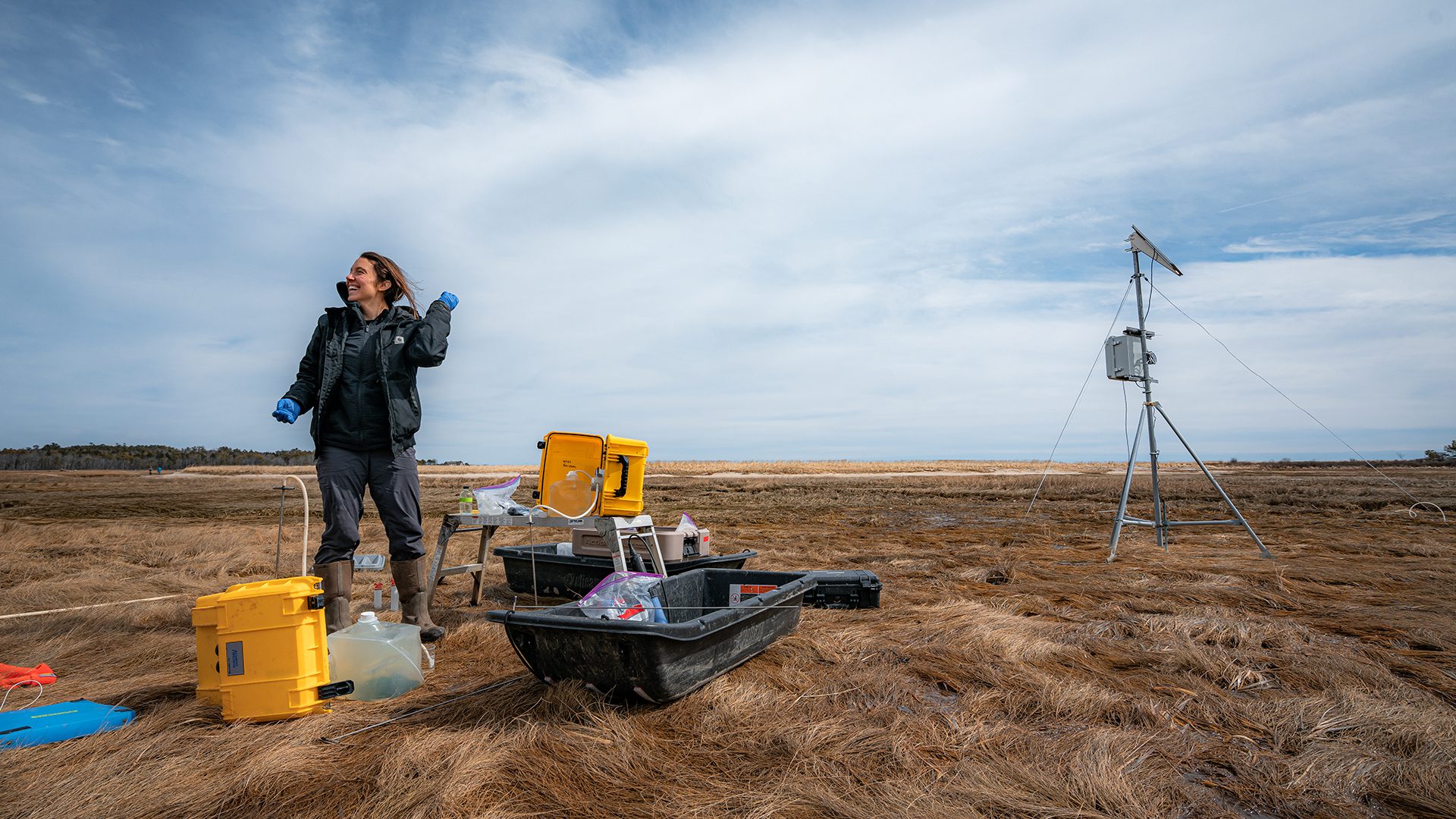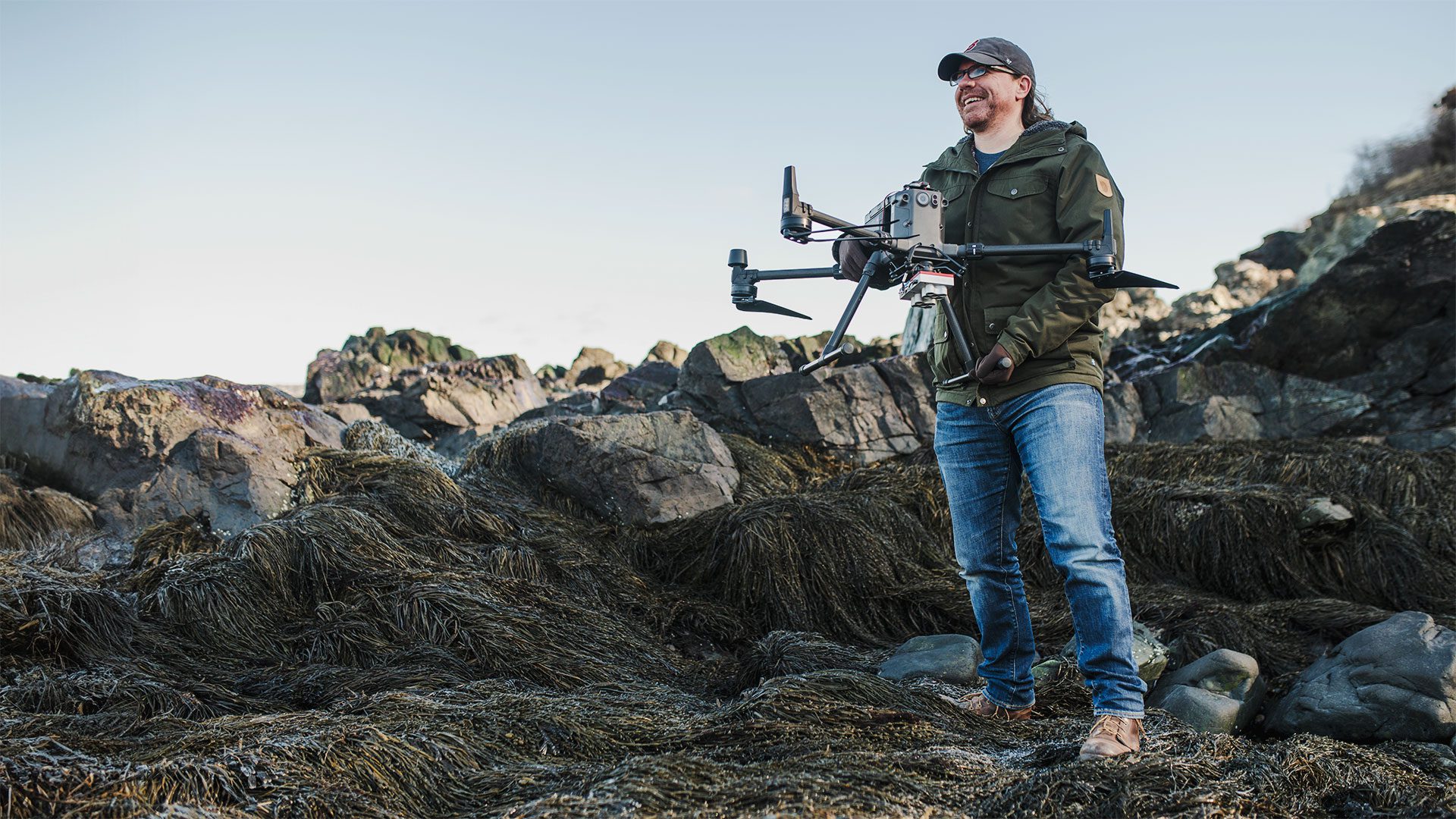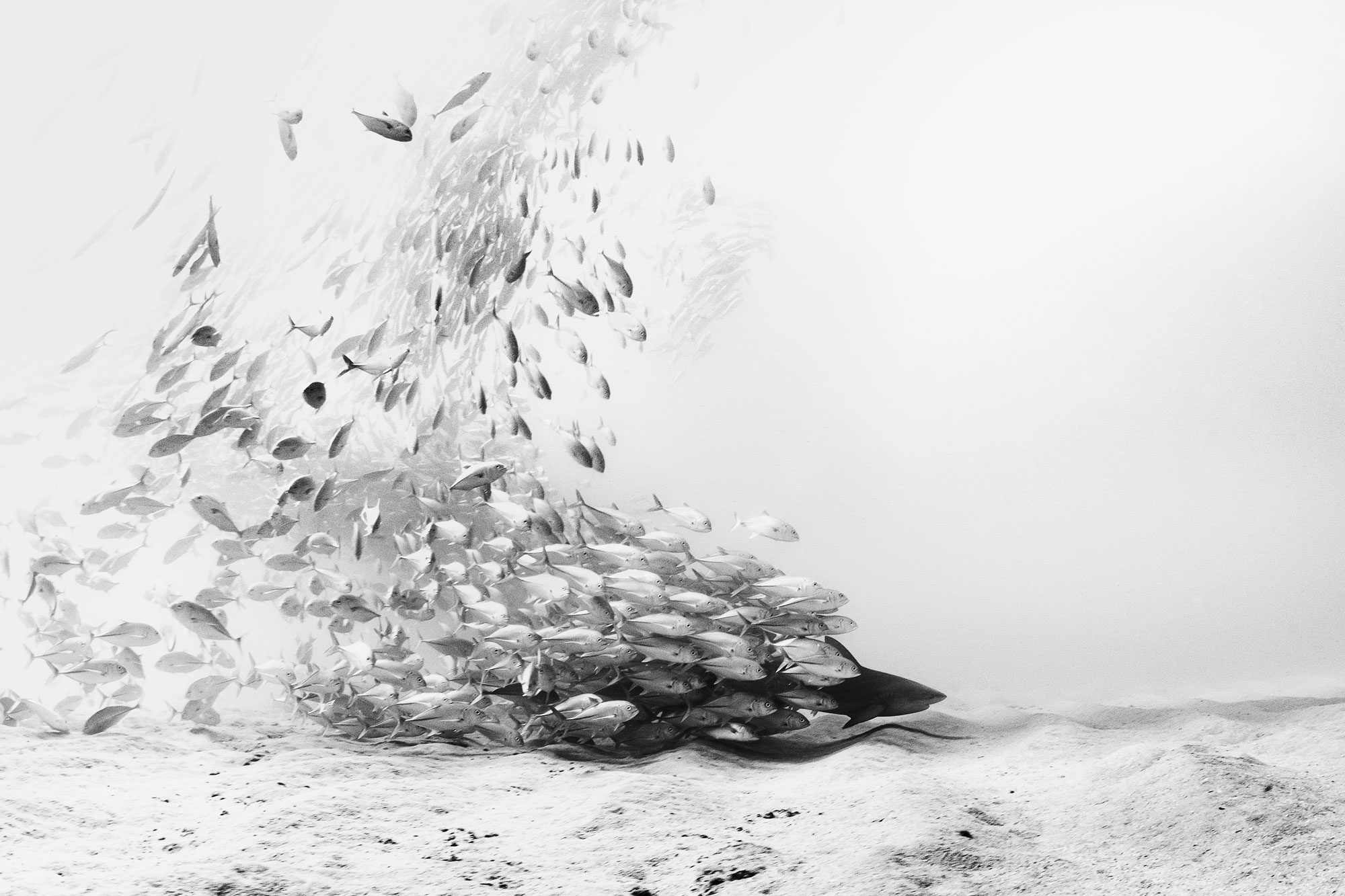Can Clams and Oysters Help Clean Up Waterways?
Survey shows potential for shellfish to reduce excess nitrogen
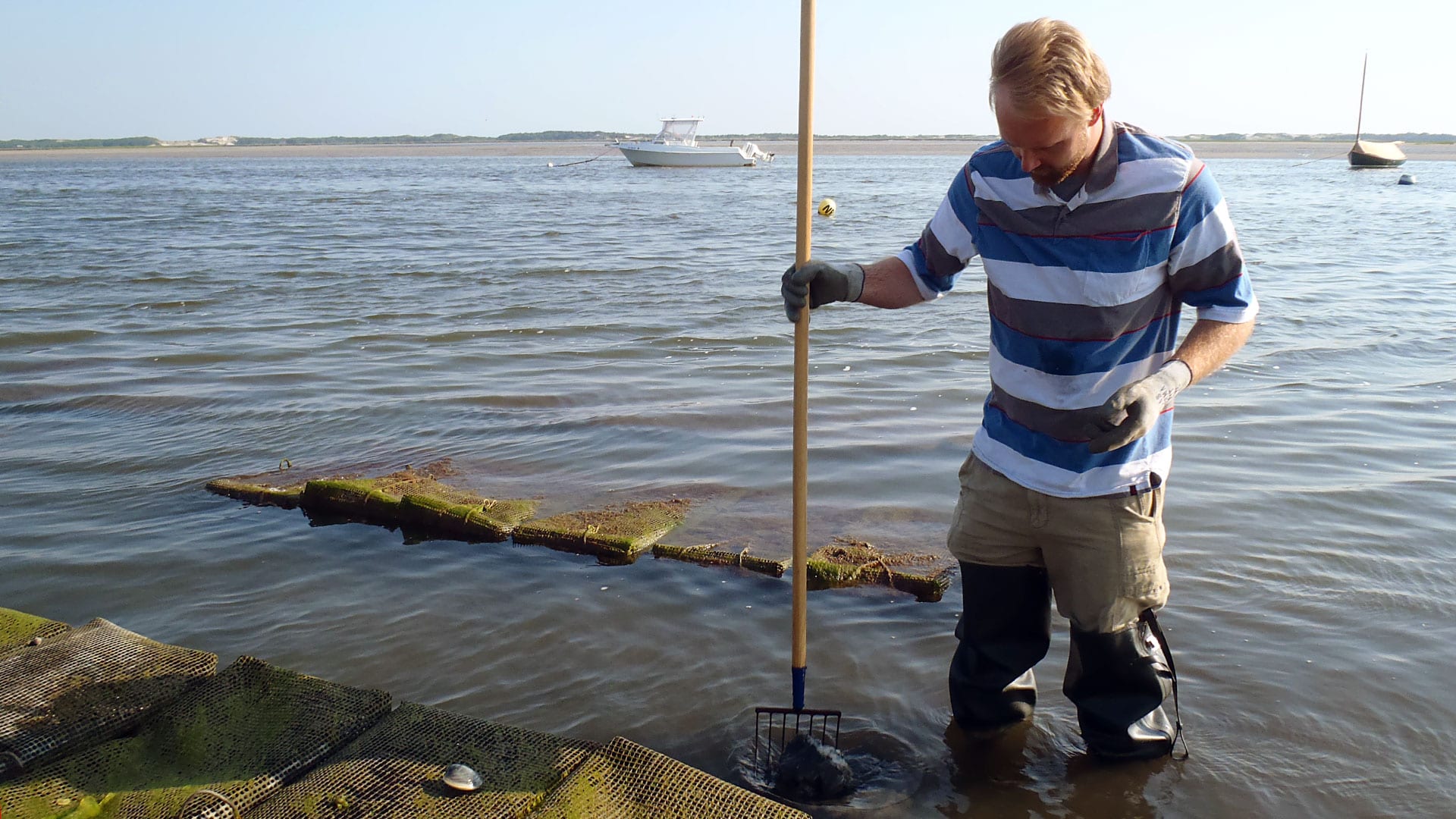
Estimated reading time: 3 minutes
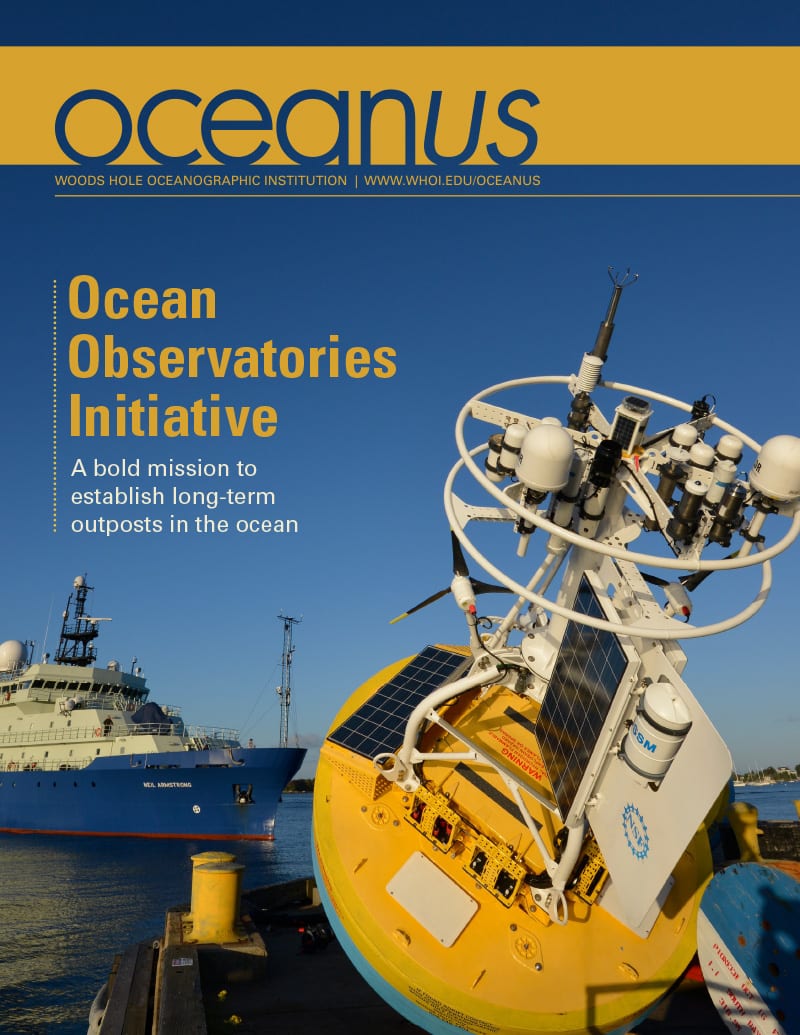 This article printed in Oceanus Winter 2017
This article printed in Oceanus Winter 2017
Towns in Cape Cod are looking to shellfish not only as culinary treats, but as a way to help clean up waters suffering from excess nitrogen.
Nitrogen is an essential nutrient for plants and animals, but too much nitrogen—often from fertilizer runoff and septic tanks—boosts the growth of algae, which overwhelm water bodies and ultimately reduce oxygen levels in them. Oysters, clams, and other shellfish are efficient filter feeders that help remove excess nitrogen from waters by incorporating it into their shells and tissue as they grow.
Towns are considering seeding and growing shellfish as a way to reduce nitrogen levels in coastal waters because they are a cheaper and faster alternative to building sewers and wastewater treatment systems that could cost billions of dollars, said Joshua Reitsma, a marine specialist with the Woods Hole Sea Grant Program and Cape Cod Cooperative Extension.
Adult oysters reportedly can filter up to 50 gallons a day, while large quahogs (hard clams) can clean about 24 gallons of water a day. But how much nitrogen ends up in their tissue and shells? That represents how much nitrogen would be removed from the water when the shellfish are harvested.
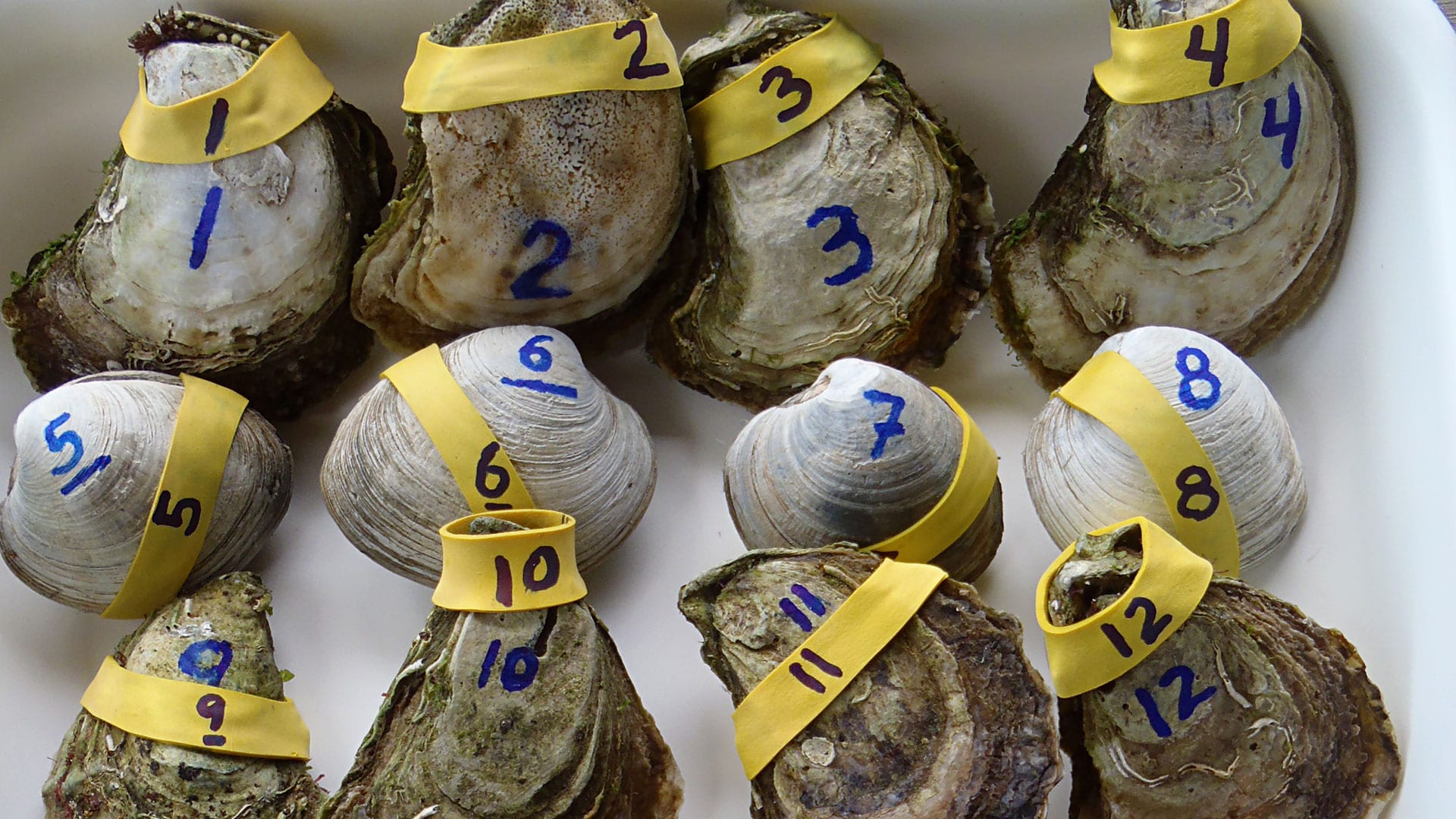
Researchers from WHOI Sea Grant and the Cape Cod Cooperative Extension analyzed wild and farmed oysters and quahogs to see how much nitrogen they can store in their shells to assess how much excess nitrogen they can removed from coastal waters. (Diane Murphy, Woods Hole Sea Grant)
To find out, Sea Grant and Cooperative Extension researchers joined with the Mashpee Department of Natural Resources to measure the nitrogen removal capacities of shellfish harvested from Cape Cod waters.
They gathered samples of both wild and farmed oysters and quahogs from various water bodies in Cape Cod. Their analyses showed that individual oysters, on average, contained .28 grams of nitrogen, and quahogs contained .22 grams. Wild oysters and those grown on pond bottoms contained an average of .32 grams of nitrogen—more than those grown in floating cages.
“Wild oysters or bottom-grown oysters, which deal more with predators, have to grow thicker shells for protection,” Reitsma said. “More shell means more nitrogen that the animal has stored in that shell.”
“Multiply those numbers by the number of shellfish harvested and you can assess how much nitrogen is removed from the waterways, and how much less nitrogen has to be removed by other means,” said Matt Charette, director of the Woods Hole Sea Grant program.
Shellfish harvested in the fall incorporated more nitrogen, which Reitsma said wasn’t a surprise, since oysters and quahogs tend to “fatten up” in the fall in preparation for the winter season.
“Theoretically, you could maximize the amount of nitrogen removed by harvesting in the fall rather than in the spring, when the shellfish tend to be skinnier,” he added.
Oysters and quahogs used for cleanup from approved waters are still safe to eat, said Diane Murphy, a Cape Cod Extension fisheries and aquaculture specialist.
“You can think of it in terms of your garden,” she said. “You wouldn’t think twice about eating Swiss chard or tomatoes grown in your garden, and yet they have incorporated nitrogen from the soil to help them grow. Oysters and other living organisms do the same thing.”
“Using shellfish is not only a low-cost alternative for nitrogen cleanup, it offers economic benefits of jobs and revenue for shellfish growers and restaurants,” Charette said.
But the researchers stress that shellfish aquaculture should be considered just one part of the long-term solution for reducing nitrogen in waterways.
“Aquaculture is something that can start alleviating those nitrogen loads immediately, but it can’t do it all,” Murphy said. “It would be a disservice to the shellfish to expect them to bear the sole burden of cleanup.”
Reitsma, Murphy, and co-authors Abigail Archer of Woods Hole Sea Grant and Cape Cod Cooperative Extension and Richard York at the Mashpee Department of Natural Resources published their study in January 2017 in the journal Marine Pollution Bulletin. The research was supported by the Barnstable County Cape Cod Cooperative Extension, and Woods Hole Sea Grant.

